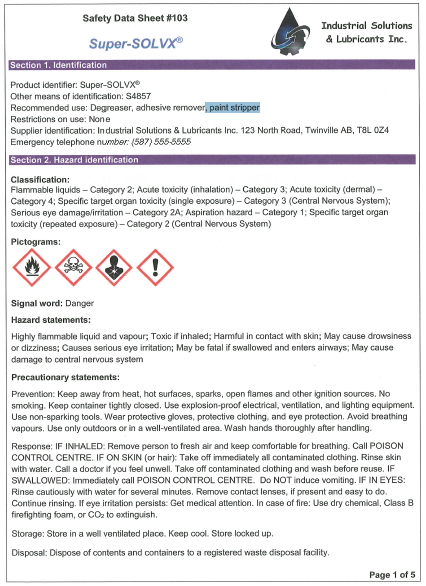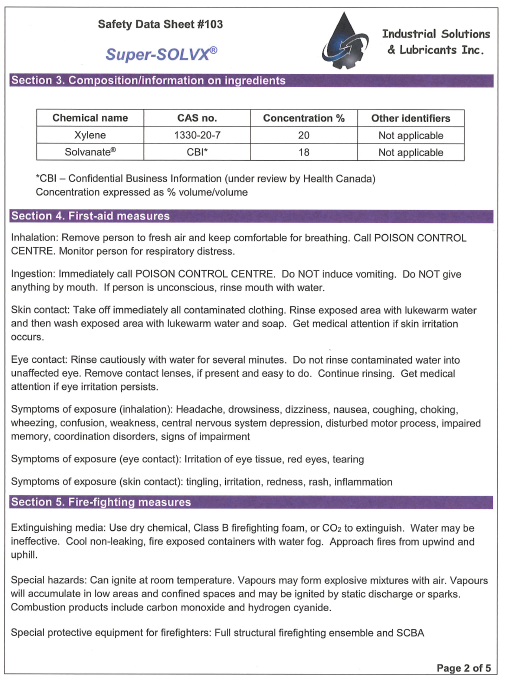1.
What is the short name of the system included in WHMIS 2015 that is not in WHMIS 1988?
2.
What is the name of the WHMIS-related legislation that applies to workers and employers and workers in Alberta?
3.
WHMIS covers all products classified as hazardous?
4.
List a types of products that may be harmful to workers that are not covered by WHMIS.
5.
In Alberta, workers must be trained on all harmful products they work with or work around?
6.
What are the three components of WHMIS?
9.
The correct order of hazard classification in WHMIS 2015 is groups, classes, and categories?
10.
What are the names of the two hazard groups in WHMIS 2015?
11.
Indicate which of the following hazard classes belong to the physical hazard group?
12.
Category 1 hazards are more hazardous than category 3 hazards?
13.
Category 2B hazards are less hazardous than Category 2A hazards?
14.
What is the hazard description for the symbol below?
15.
What is the purpose of a Hazard statements?
16.
The pictogram for Biohazardous Infectious Material from WHMIS 1988 is still used in WHMIS 2015.
17.
What are the two signal words in WHMIS 2015?
18.
Which one of the following statements is true?
19.
Which one of the following are listed from least serious health hazard to most serious health hazard?
20.
What is the purpose of a hazard statement?
21.
What is the purpose of a Precautionary statements?
22.
What are the four types of precautionary statements?
23.
Indicate which statements shown below are for preventative disposal.
24.
Indicate which type of precautionary statement "Keep away from heat, hot surfaces, sparks, open flames, and other ignition sources " for Liquid Cleaner 77?
25.
Indicate which type of precautionary statement "Dispose of contents and container according to local regulations for hazardous products" for Liquid Cleaner 77?
26.
What are the recommended uses for Super-SOLVX?
Use the SDS for Super-SOLVX® to complete the next several questions. The SOS section numbers
are shown in brackets


27.
What is the most serious health hazard from Super-SOLVX?
28.
What are the 3 main routes of exposure for Super-Solvx according to the SDS?